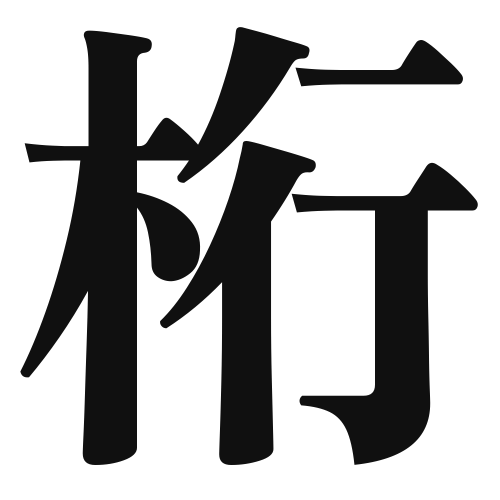1. Overview of Meaning
The kanji “桁” (keta) primarily means “digit” or “column.” It is often used in contexts related to numbers, such as counting or indicating the place value of digits in a number.
2. Formation and Radical
Formation of the Kanji: The kanji “桁” is a combination of two components: the radical “木” (tree) and the phonetic component “ケ” (ke). The “木” radical suggests a connection to something structural or foundational, while “ケ” provides the pronunciation.
Radical: The radical of “桁” is “木,” which is commonly associated with trees and wood, indicating a connection to nature or physical structures.
3. Examples of Usage
Common Words and Phrases: “桁数” (ketasuu) meaning “number of digits,” and “桁違い” (ketachigai) meaning “out of proportion” or “vastly different.”
Example Sentences in Daily Conversation:
- この電話番号は桁が多いです。 (This phone number has many digits.)
- 彼の収入は桁違いに高いです。 (His income is vastly different from others.)
4. Synonyms and Antonyms
Similar Kanji: “数字” (suuji) meaning “number,” which refers more broadly to numerical figures rather than the specific place value indicated by “桁.”
Antonyms: There are no direct antonyms for “桁,” but in a broader sense, “無” (mu) meaning “none” or “zero” could be considered an opposite in terms of quantity.
5. Cultural and Historical Background
Connection to Japanese Culture: The concept of digits and counting is fundamental in Japanese culture, especially in traditional practices like counting years, seasons, and even in the context of money.
Proverbs and Idioms: One relevant idiom is “桁外れ” (ketahazure), which means “extraordinary” or “out of the ordinary,” often used to describe something that stands out significantly from the norm.
